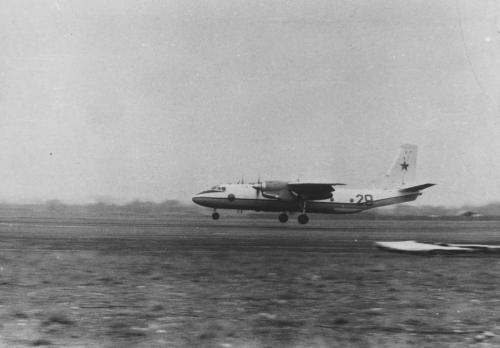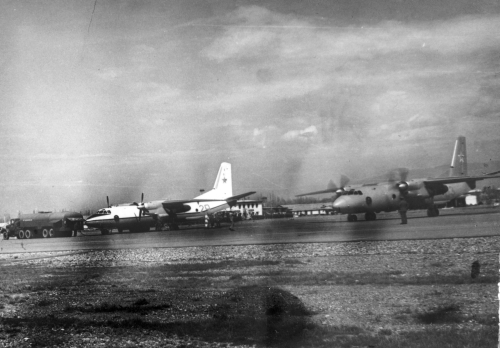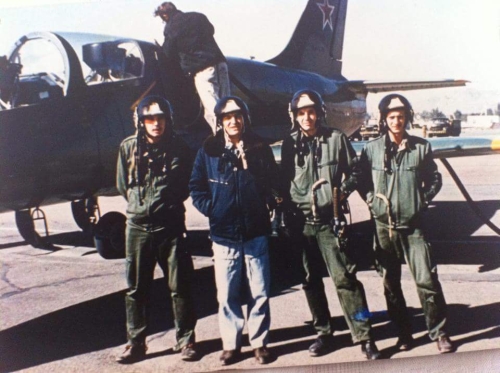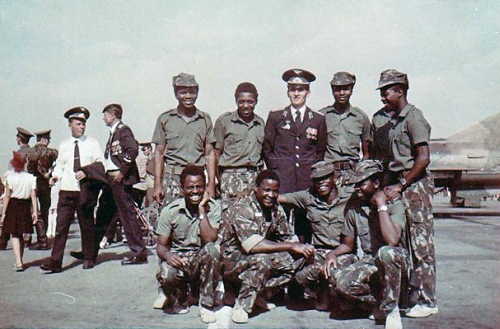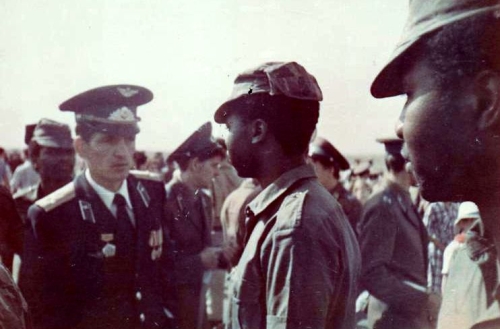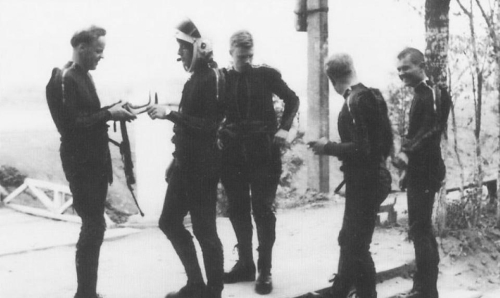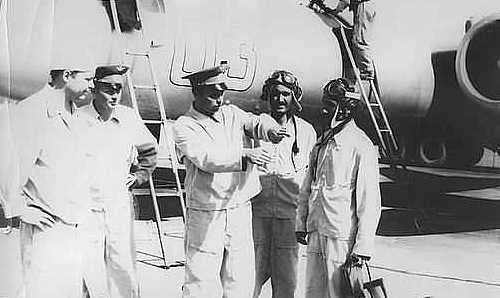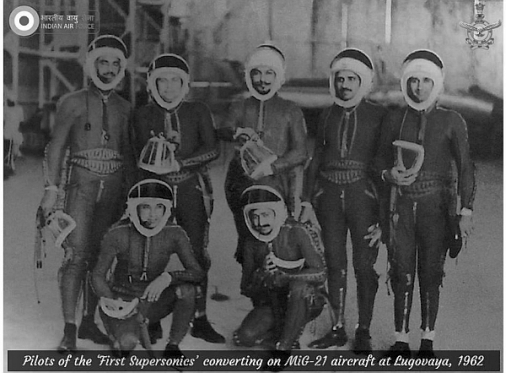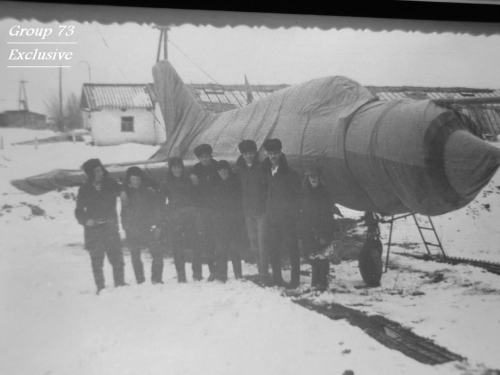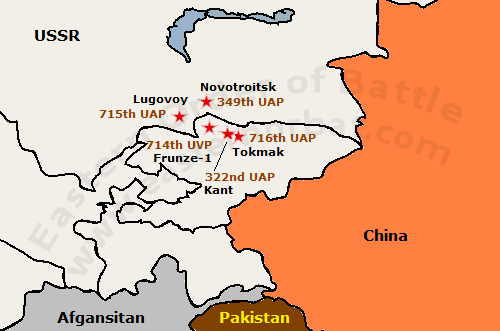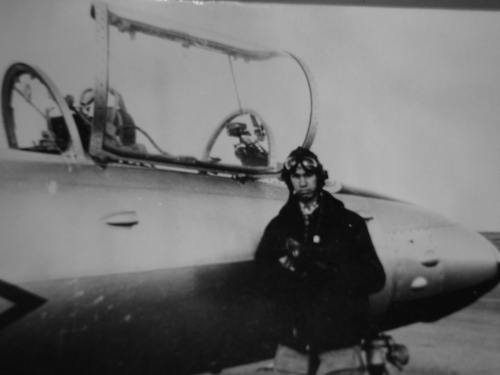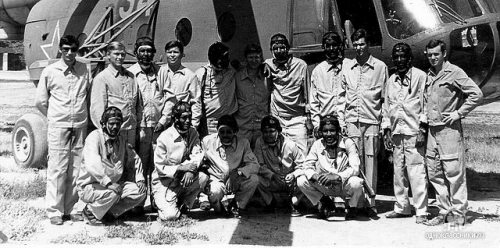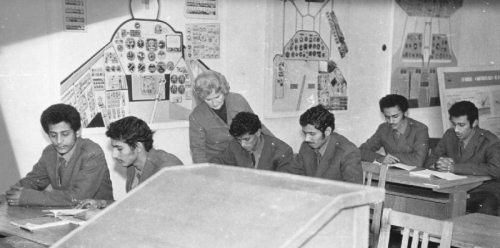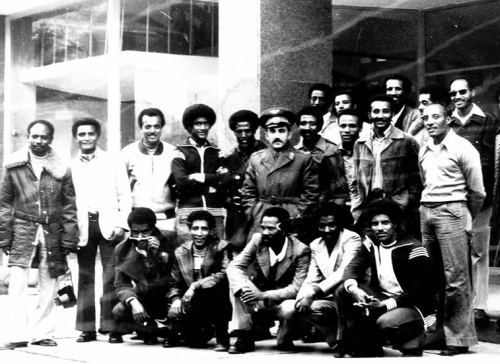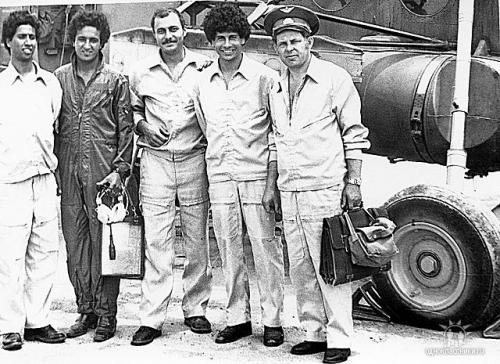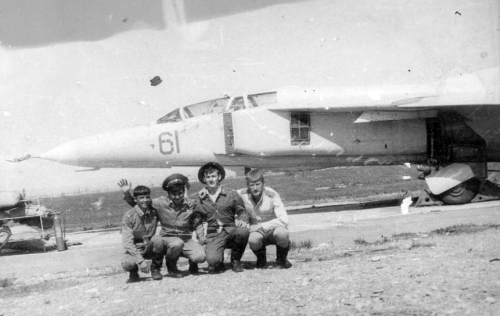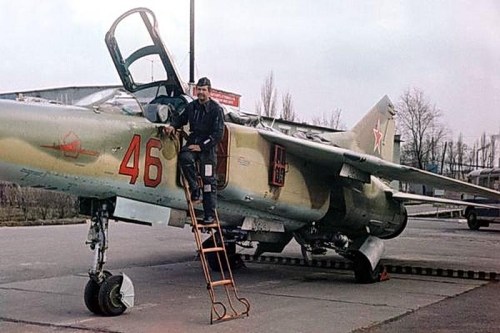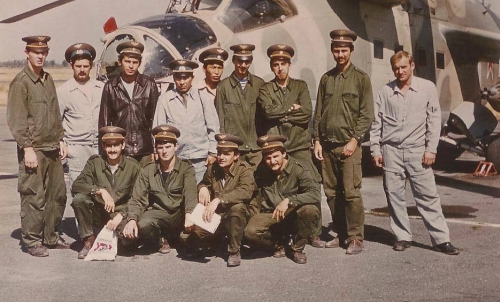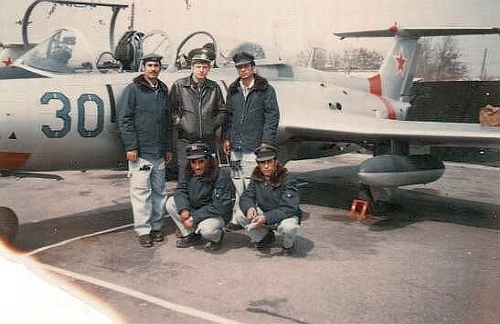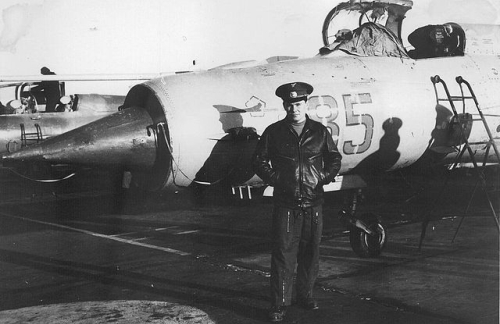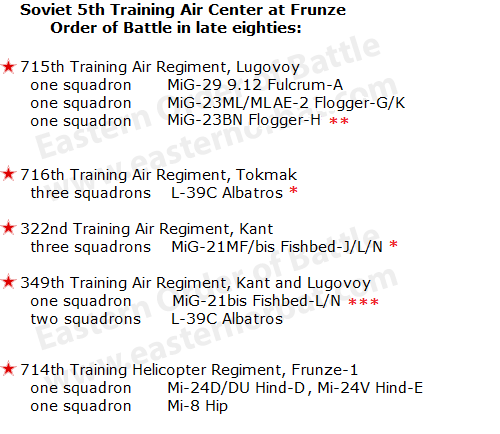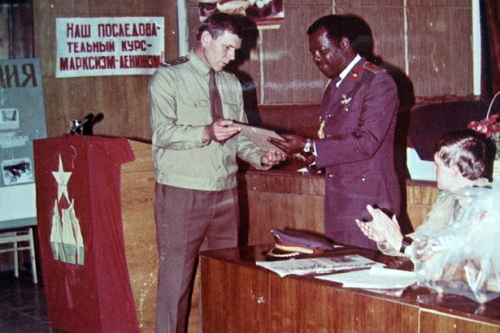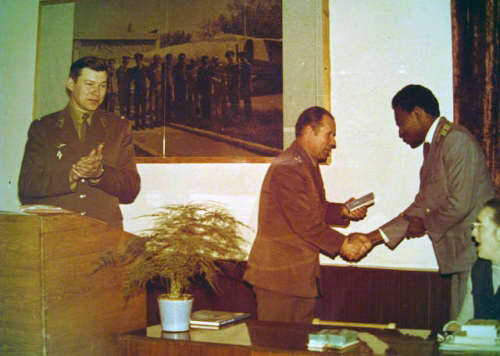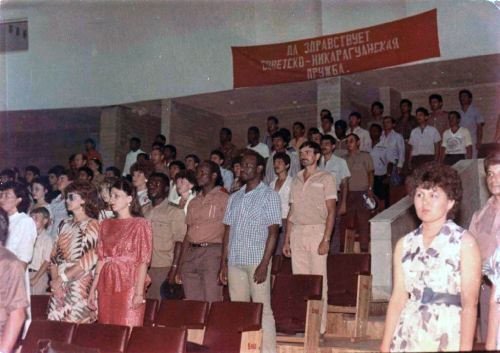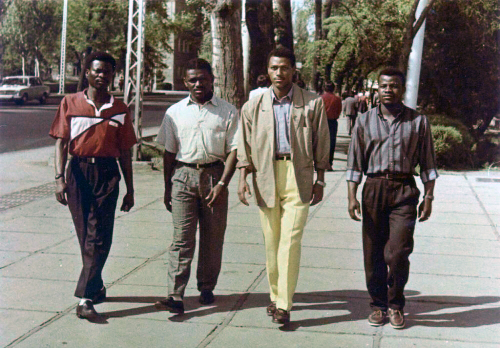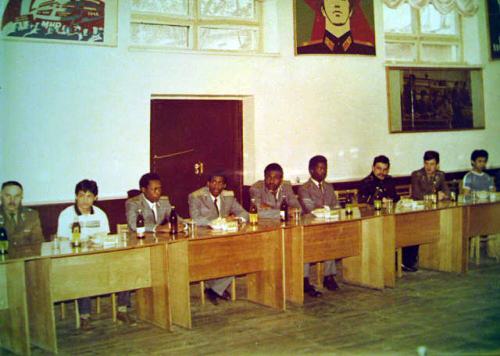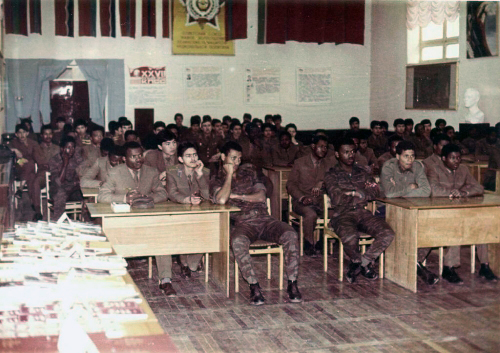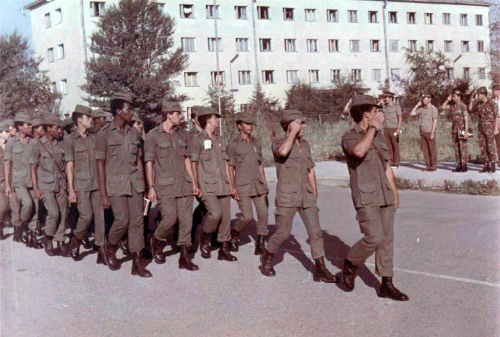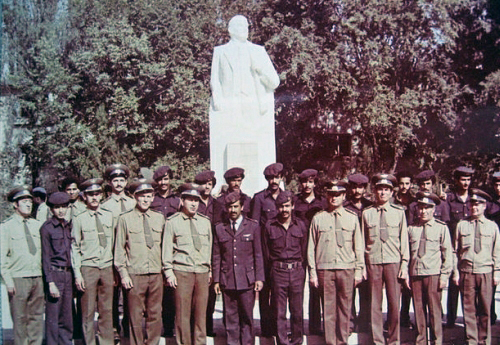|
|
 |
 |
|
The Frunze Military Aviation School began to train pilots from foreign countries in 1956. The first 15 pilots were taught on Yak-11, Yak-18 and MiG-15 ‘Fagot’ models. The school was renamed in 1959 to 5th Training Center and the improvement of Aviation Personnel. At the edge of Central Asian deserts and rugged valleys of Tien Shan mountains, far from everything were the foreign pilots trained. It was believed that the Soviet Union secrets can be best preserved this way.
|
 |
 |
|
In 1962 started the training to the new super-secret MiG-21 ‘Fishbed’ type at the school of Frunze. The experienced pilots of friendly countries (Finland, India, and the Arab States) were trained at the Lugovaya 715th regiment. The pilots of allied Warsaw Pact countries weren’t trained here but at the North Caucasus Krasnodar school. The retraining for Su-7 ‘Fitter’ bomber aircraft began in 1966 here.
|
|
|
 |
 |
|
Left: Pilots of the Indian ‘First Supersonics’ squadron converting in MiG-21F-13 ‘Fishbed-C’ aircraft at Lugovaya airport in 1962. Photo: Indian Air Force - Media Co-ordination Centre
|
|
 |
 |
|
The main task of the school was the training of novice pilots based on inter-state agreements. In the sixties, mainly young Arab pilots were trained to L-29 Delfin and MiG-17 ‘Fresco’ models. At Tokmak and Kant airport the 716th and the 322nd Training Air Regiment only did basic training. Combat training was not given to the pilots. They should have received that at home after arrival.
The Frunze school students after graduation became leading politician, or Air Force commanders. Example, Hafez al-Assad - Syrian statesman, Ahmed Julen – Yemen Air Force commander, Joao Bernardo – Mozambique AF commander, Rakesh Sharma – Indian astronaut and other people.
|
|
|
 |
 |
|
The training of helicopter pilots also began in the sixties. First, they used Mi-4 ‘Hound’, later Mi-8 ‘Hip’ models.
|
 |
 |
|
From the late 1960s, the Soviet 5th Training Center also began training African flight crews. Because of the growing needs, in this time a new 349th Training Air Regiment formed at the Novotroitskoye airport.
|
 |
 |
|
Since the early seventies, An-26 ‘Curl’ crew training was also conducted. Every of the five crew members (pilots, radio operator, navigator and flight engineer) to the An-26 ‘Curl’ were trained at the 5th Training Air Center.
|
 |
 |
|
|
 |
 |
|
The new L-39 Albatros training aircraft arrived in the late 1970s and then the MiG-21bis ‘Fishbed-L/N’ fighter aircraft in the early 1980s. The basic flight training regiments used the older MiG-17 'Fresco' type for the African pilot training until the mid-eighties.
|
 |
|
 |
 |
|
The airport of Novotroitsk was renovated from 1984, therefore the 349th Training Air Regiment used Kant and Lugovaya Airport. The reconstruction was slow, it didn't finish until the dissolution of the Soviet Union. The regiments pilot and machine portfolio changed on demand. In 1986, for example, they trained the Indian Mi-26 ‘Halo’ crew here.
In 1985 started the training for the MiG-29 ‘Fulcrum’ type. In the eighties, only the 715th regiment trained foreign pilots for the MiG-29 ‘Fulcrum’!
|
 |
 |
|
Open day at the Kant airbase Photo: Fomicheva A.P.
|
 |
 |
|
In the second half of the eighties, pilots arrived especially from the conflict zones and Sub-Saharan Africa for basic flying training. A lot of pilots from Cuba, Angola, Ethiopia, and Yemen studied at Kant and Tokmak airport. At the 716th, 322nd, 349th Training Air Regiments and the 714th Training Helicopter Regiment they learned to fly and navigate at basic level on L-39C Albatros, MiG-21MF ‘Fishbed-J’ and MiG-21bis ‘Fishbed-L/N’ aircraft and Mi-8 ‘Hip’ helicopters.
At that time, more than a hundred interpreters were working in the 5th Training Center.
|
 |
 |
|
Between 1957 and 1992, the school trained 21 682 people from 54 countries to 110 different fields of study. Among others 5698 pilots, 749 navigators, 469 combat control officer, 165 air gunner, 8998 radio operator-navigator and more than 5,000 other aircrews.
The training terminated in 1992. The Soviet 5th Training Center disbanded in early nineties.
|
|


